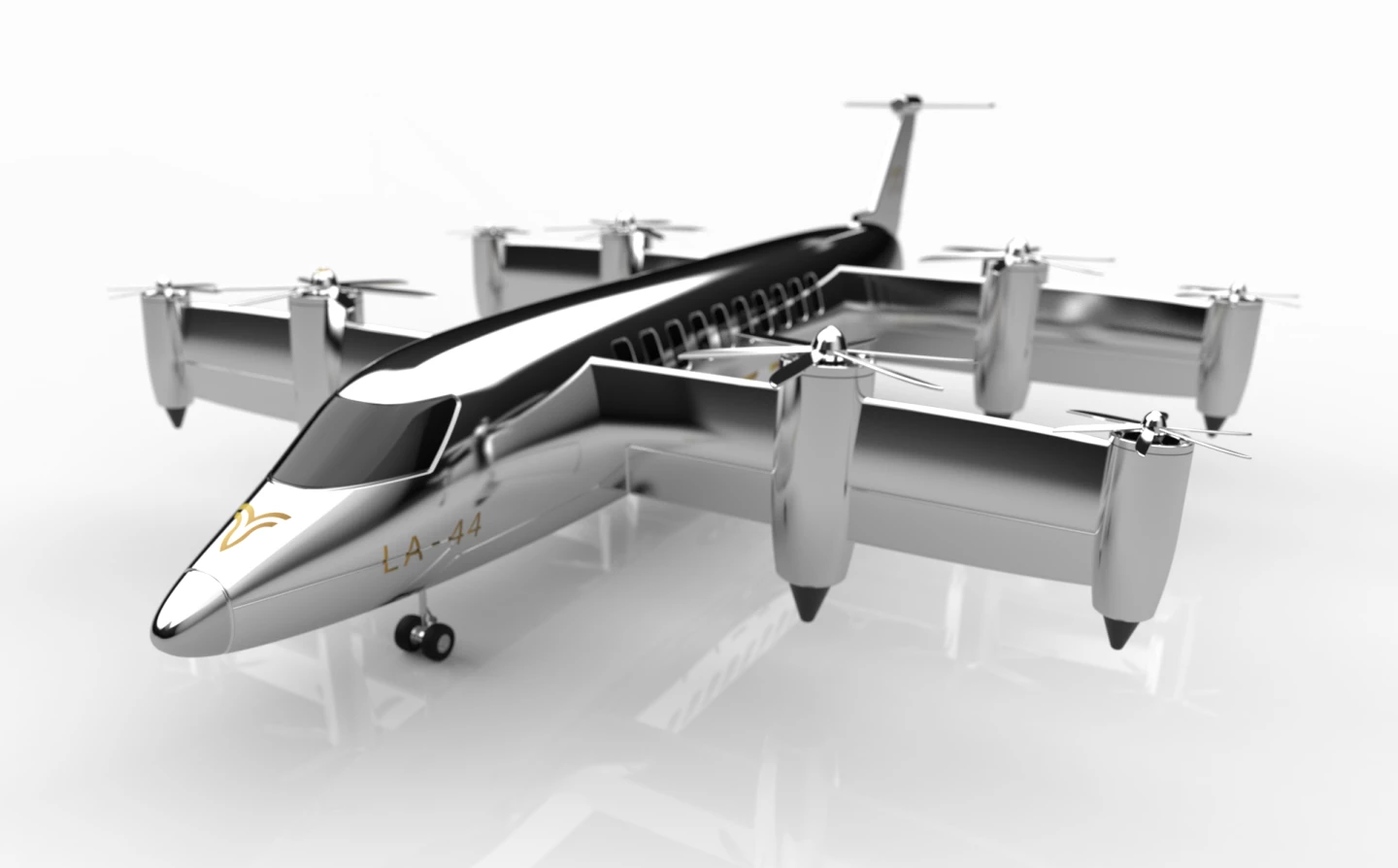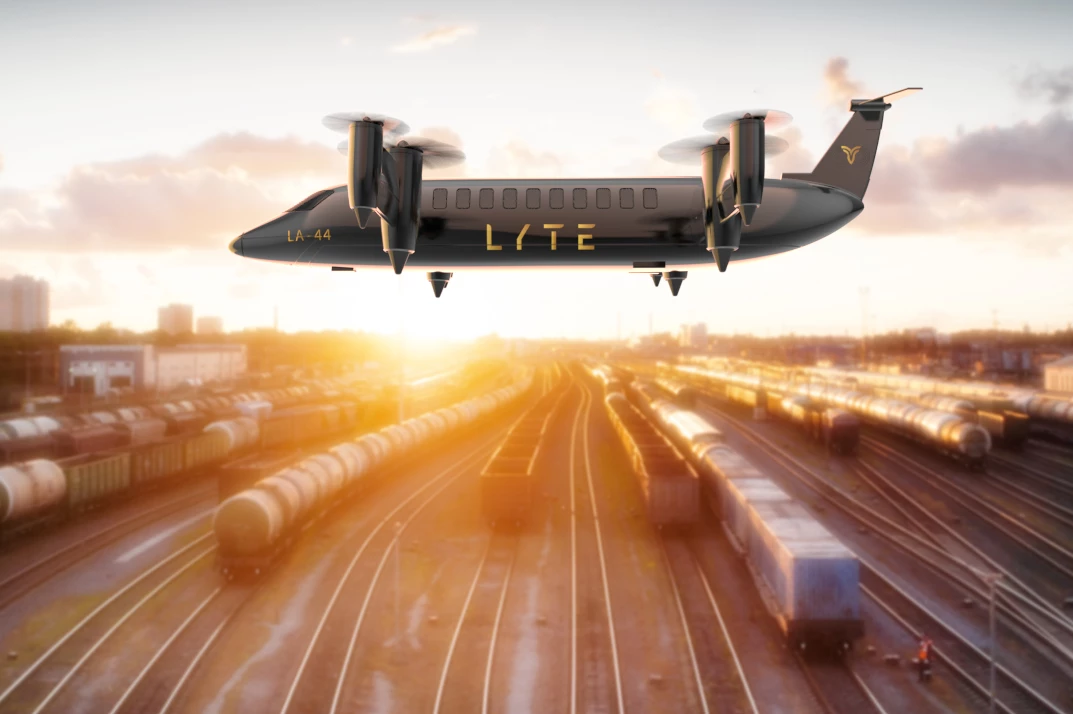London startup Lyte Aviation is thinking big when it comes to VTOL aircraft. Forget your piddly five-seaters, Lyte says its first aircraft will be a 44-seat monster with a 300-km/h (186-mph) top speed and a range over 1,000 km (620 miles).
The company's rendered SkyBus airframes look like stretched, chromed-out business jets, or even small airliners – but with tandem wings at the front and rear of the fuselage. These short wings each sport a medium-sized inner propeller and a smaller outer one, for a total of eight six-bladed props. The props look curiously small, considering the size of the thing.
For vertical takeoff and landing, the wings rotate to point the props upward, and once it's aloft, the SkyBus will begin tilting its wings forward until it reaches an efficient wing-supported cruise speed. The tilt-wing concept has certainly been floated before – albeit not at this kind of scale. We wonder how well it'll handle wind gusts in a hover with those wings sitting vertically.

In order to carry enough energy to lift this whopper of a machine, Lyte says its first aircraft will run existing turboprop engines on regular or sustainable jet fuel. Power levels, according to FutureFlight, will be between 3,500 and 5,000 hp.
Apparently, there'll also be some hydrogen fuel cell electric motors on the wingtips, perhaps to add some instant electric torque that might give these props a chance of responding quickly enough to balance this big multirotor in a hover. Alternatively, perhaps they're planning on using variable-pitch rotors that can quickly vary thrust on an engine-by-engine basis without having to wait for a combustion system to spin up.
Lyte says it has ambitions to get the entire aircraft onto clean hydrogen-electric propulsion once that tech is proven out and widely available. It's hoping to have a full-scale prototype built by 2024 and ready to fly in 2025, and has announced a (presumably heavily conditional) pre-order deal with India's Vman Aviation Services for 10 SkyBus aircraft at a tidy €400 million (US$428 million).
The unique angle here is obviously the size; these things could cover lots of regional flights with the kind of range they're promising, with the benefit of not needing a runway at either end. They could offer a quick, easy way to island-hop with 43 of your closest friends, or potentially fly standard routes as a hop-on, hop-off service, very much like a bus in the sky.
Lyte isn't the first company that's talked about VTOLs on this scale. Fellow UK company GKN Aerospace did an initial feasibility study on a 30- to 50-seat, six-rotor electric VTOL skybus concept, for example, and then there was this outrageous 40-seat lifting-body eVTOL from NYC's Braeden Kelekona.
Neither of these companies appear to have made much headway in the last couple of years. Indeed, bringing a new VTOL aircraft to market is a brutally difficult process. Take the AW609 for example – Bell and Boeing started out trying to build a civilian tilt-rotor aircraft back in 1996, having already built the military V-22 Osprey. As of 2023, the project is owned by Leonardo, which is hoping – and far from guaranteed – to have the thing certified and put into service by 2024, 28 years after its inception.

So we won't be holding our breath on Lyte's SkyBus – or indeed, the SkyTruck cargo version. Founder and CEO Freshta Farzam is a little 'Lyte,' shall we say, on aviation experience, but she comes from the finance world, so perhaps she's better placed than most folk to drum up the multi-billion-dollar investments that are required even to get a five-seat eVTOL air taxi through to certification and production. But it'll be one heck of an uphill battle; we're gonna file this one under "long shots."
Source: Lyte Aviation







